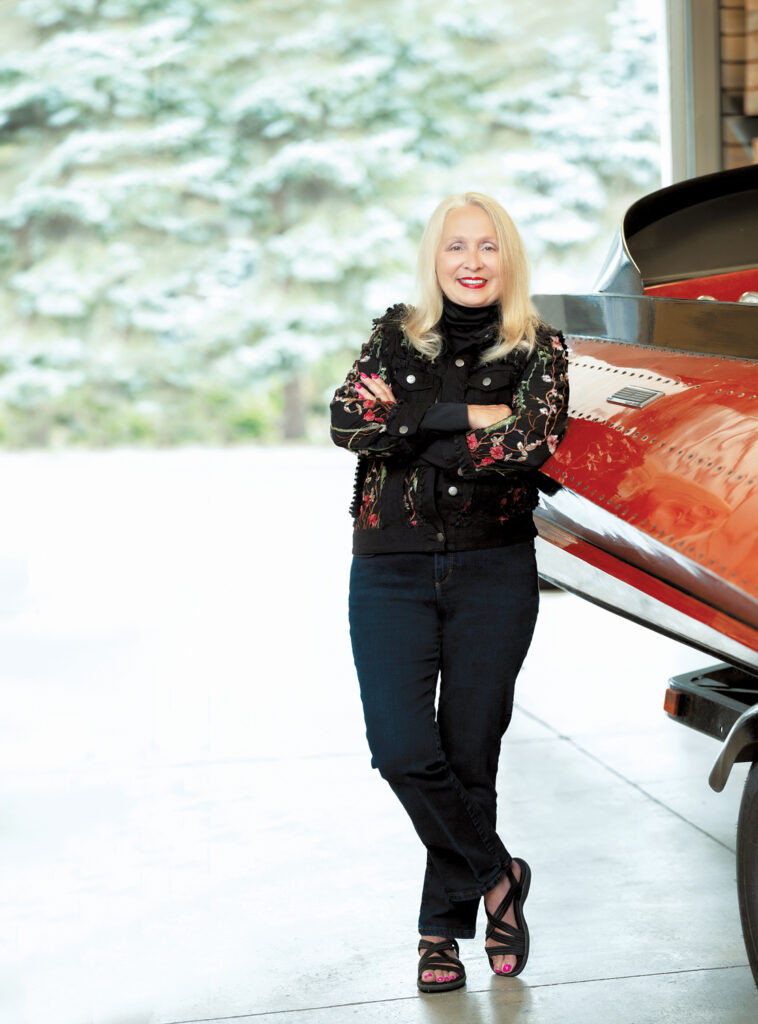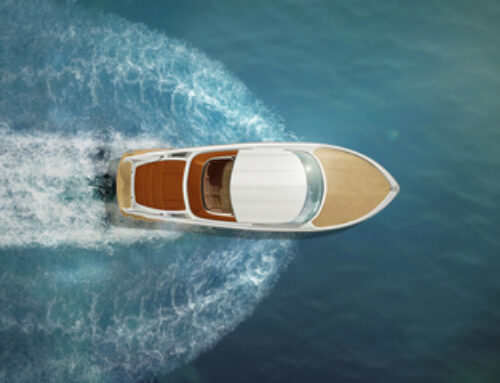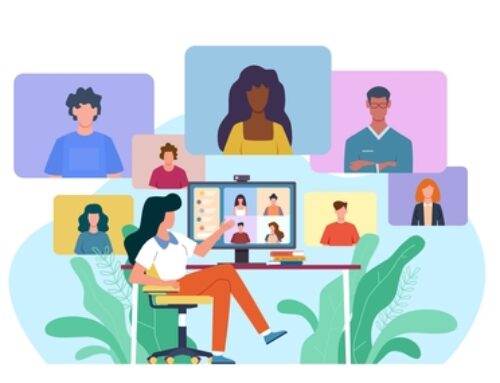Networking builds confidence and long-term success
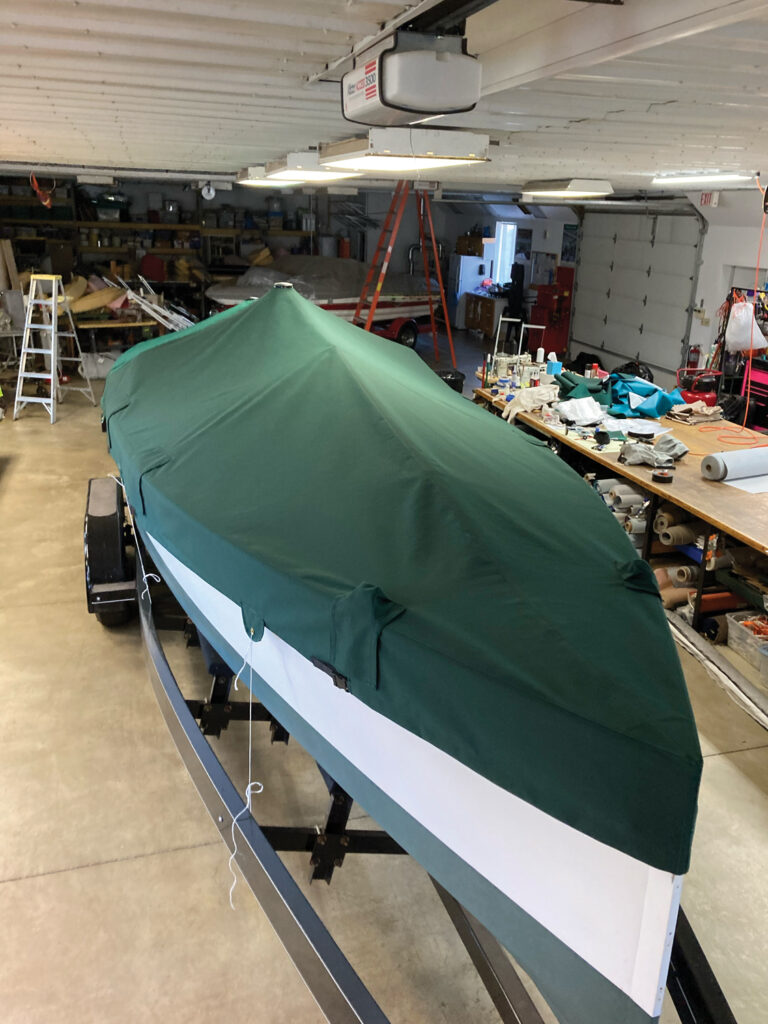
Although Faith Roberts’ business has been mostly a one-woman show for almost 40 years, she has always been a firm believer in the power of networking.
When she graduated with a degree in apparel design, Roberts envisioned going to New York and designing eveningwear. Instead, she began working at a growing bridal design studio in Blaine, Minn. After rising through the ranks over five years, Roberts realized that she couldn’t go any further. Devastated because she thought she’d spend her career there, she called a temp service and asked for a sewing job. It placed her with Banner Canvas, a third-generation family-owned company in Ham Lake, Minn.
“Going from apparel design to Banner Canvas was just like starting a different chapter,” she says.
Leap of Faith
That was June 1986, and the owners were just looking for someone to fill in for a two-week banner job. One week later, Roberts and the owners negotiated for a full-time contract. About four months after that, they asked if she’d be interested in buying the company. “I’d been looking around, thinking, ‘God, this would be a great place to own.’” Her wish came true, and she bought Banner Canvas in June 1987.
Just two months after she bought the company, the NFL approached her about fabricating large flags and banners for its upcoming Super Bowl® halftime show in Minneapolis in 1992. Apart from her natural sewing abilities, Roberts quickly learned that her skill set did not translate to this type of work yet.
“I called a supplier and said, ‘Oh my God, what am I going to do?’ and he said, ‘There’s this organization that you might be interested in. I think it would really help you.’ So I picked up the phone and got involved with ATA [then called IFAI]. It was a godsend because I’ve learned where the teachers are, the lifelong friends, the networking, the talent that’s out there—it’s like, wow, you just couldn’t find it anywhere else,” she says. She may not have won the Super Bowl contract, but she gained contacts and training fast because of the possibility of the long-term project.
A rising tide lifts all ships
Bob Mead, former ATA executive secretary (a position now called president/CEO) and editor from the early ’60s until the mid-80s, hand-selected 16 people to set the charter for a new organization called Marine Textiles, which also published the Marine Textiles magazine. “He’s the one who realized that if you get these like-minded people together, they can set the precedent for the organization,” she says. (The magazine eventually folded and then the organization merged with ATA’s Marine Fabricators Association in 1994.) Roberts believes it was that initial push by Mead that set everybody in motion, and it just carried on from there.
“These people were just as hungry as I was. They wanted to see something different happen in the industry. We became a coalition of people who wanted to get out of the cottage industry and make a livable wage. And the only real way to do that was to band together and do something profound.” The group members felt that the Master Fabric Craftsman (MFC) certification programs would help set them apart and give them a benchmark for standardization, lending credibility and ensuring trust among customers.
“There were a lot of meetings about the testing procedures for MFC, the judging procedures for the photo contest, the Time Standards Manual—all came out of those early years of work. But there was a core group of people that were living it. The result of that work is what we’re doing today. The people who are now coming into this have the luxury that [our industry] was elevated because of the work that we did 30, 40 years ago.”
Roberts received the Lifetime MFC designation, awarded after 25 years, and credits that and her Industrial Fabric Manager (IFC) credential (ATA’s business management training) as benefiting her career in many ways. “The MFC tells people that I’ve gone through a board of my peers and been judged and deemed proficient at marine fabrication on anything from a 16-foot boat all the way up to a Navy ship anywhere in the world.”
Banners, boats and beyond
Although Roberts’ focus is on marine interior and exterior fabrication in vessels up to 100 feet, she has a reputation for possessing agile skills that are transferrable to other industries. This often leads to referrals to companies with unique projects, like the ongoing work she does for the defense industry. Part of a critical safety design for the Tomahawk® cruise missile, the fabric she works with is a silicone-coated fiberglass wrapped around a titanium frame that’s 10 inches wide. It is so complicated and so small that it takes her two and a half hours to sew it.
She’s also done some work for NASA related to satellite topography and closer to home, an ordnance company in Fridley, Minn. In addition to masterful skills and flexibility, both clients required discretion and nondisclosure agreements. She also accepts projects in industrial blueprint work for flexible connectors in food handling, conveyor wastewater, coal mining and high-temperature applications.
“When there’s something really weird that comes across somebody’s table, I will get a phone call. I’m happy with what’s happened over the years. It challenges me and it’s made for an interesting career. Nothing’s ever the same. There’s not a lot of repetition.”
A strong rep is her marketing
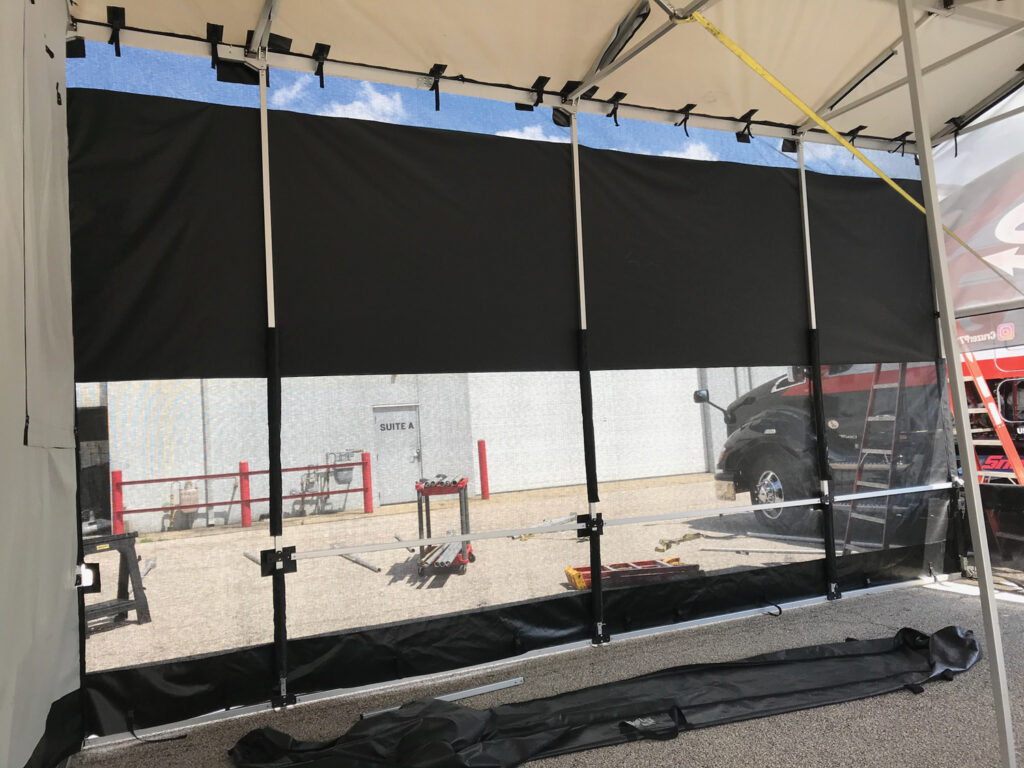
Roberts has built a solid reputation, and she has no trouble attracting customers through word of mouth. “I had a website but found it to be unnecessary at this point in my career,” she says.
Planning for a future where she might not be able to crawl around on boats anymore, she bought a Carlson cutting table to eventually transition more fully into industrial blueprint work. But she feels the most important investment she’s made is in networking and intends to get further training from an ATA colleague on how to use the cutting table.
Considering an exit strategy
With no employees for the last 10 years, Roberts works long hours, sometimes 15 to 18 hours a day. “I do love what I’m doing, but I’d like to have a better life.” She started to plan for retirement, but then COVID-19 came. “That pretty well changed a lot of things. As with most people, you can’t get away from supply chain issues. Fortunately, with my relationships in both distribution and with other fabricators, I have been able to find everything I need. I also have a healthy stock in my shop. But there has been a change in customers’ attitudes. It’s on both ends of the spectrum—they are either considerate or irate. I’m in a position to let go of people who cannot understand delay in production or supplies.”
With an eye toward the future, she says, “I have spent the bulk of my career in volunteer service of our industry. It gave me a platform to grow as a woman as well as have a hand in steering my industry to its present form. We used to be thought of as a cottage industry, and through years of work on boards, committees and networking with like-minded people, we put in place the programs that help elevate the marine industry to the high standard, livable-wage industry it is today. Through that and having had the opportunity to serve as a director on the ATA board, personally it gave me the confidence to contribute and make a difference. Now the focus is on transferring the knowledge to the next generation through video sessions on fabrication, articles, presentations and conventions.”
Maia Homstad is a freelance writer and editor based in Minnesota.
SIDEBAR: A special project for a special boat
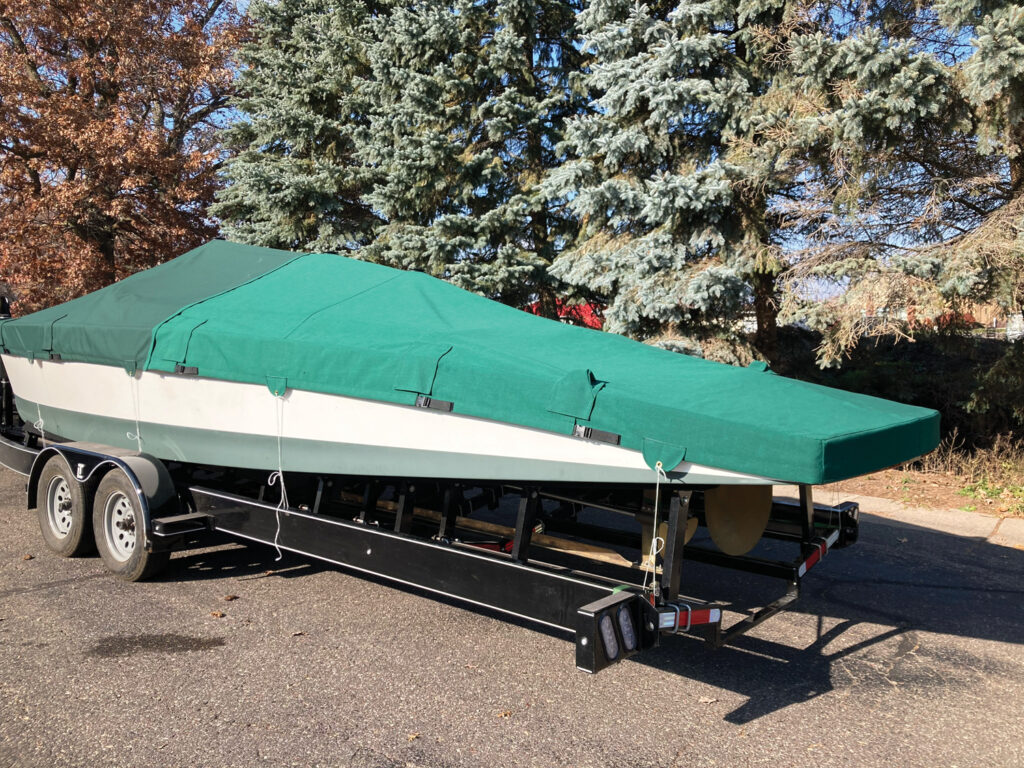
Along the Mississippi floats a one-of-a-kind luxury cruising boat: a custom-built 30-foot Thames River slipper launch.
Its owner, Kit Richardson, approached Faith Roberts, owner of Banner Canvas, in 2021 to fabricate an exacting and attractive custom cover to protect it (with matching pillows). Made from Sunbrella® fabric in two colors to differentiate the front from the back, the cover had a dual purpose: one for trailering with tie-downs to the trailer and one for being moored on the water with ratcheting straps.
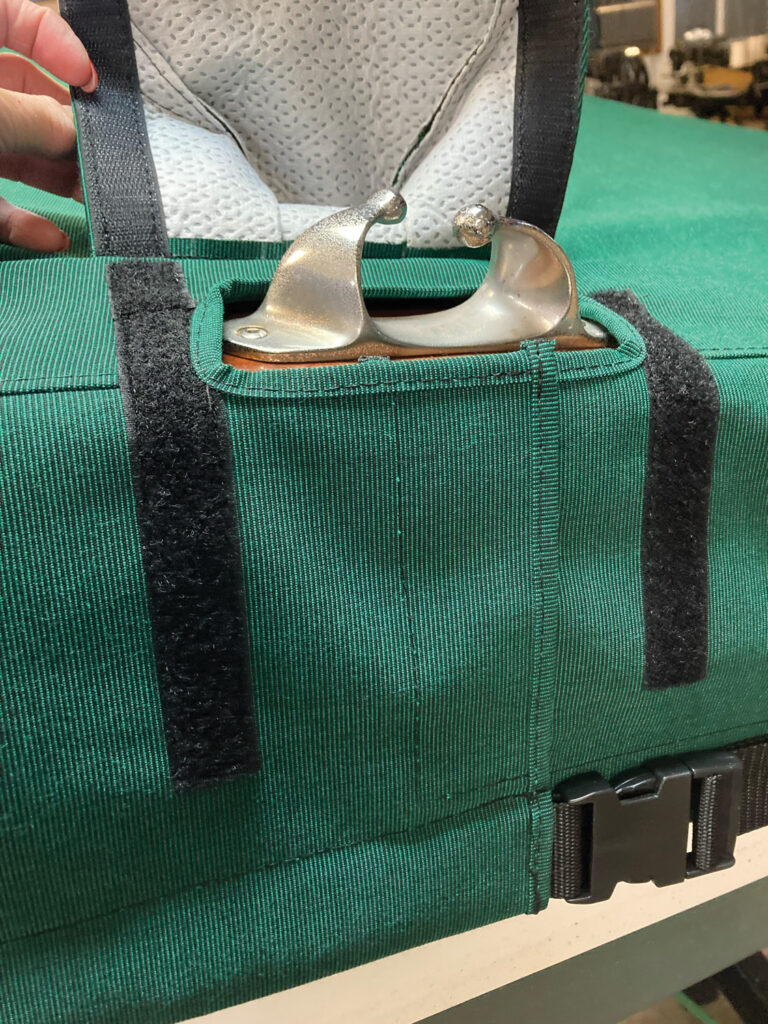
Mooring held another design challenge, with the chocks fore and aft needing to be accessible while in the water—particularly complicated as they are not symmetrical, unlike the mooring cleats on the boat. Roberts’ solution was to split the cover at each chock, two forward and two aft, so the side buckle can be disconnected from the opposite side of the cover while the Velcro® fasteners can pull away for ease of access. This allows the lines to travel at the bottom of the Velcro flaps when moored. She also made the cover to ride right at the edge, with plenty of clearance for the boat’s short 8-inch rise at the back.
SIDEBAR: Advice for new fabricators
“Network, network, network. Build those relationships with like-minded people who share your passion. Don’t limit yourself to one industry. Explore other [ATA] divisions—there’s so much knowledge to be absorbed. Those relationships found through attending conventions and conferences will give you a lifelong base to pull from.”
“Plan for the unexpected. Several years ago, both my shop and home were hit by lightning, and every system failed over the course of a few months. It’s been an absolute financial disaster. Insurance wouldn’t cover it, so that’s been a bit of a trial. This is the part of business that you have to plan for. People don’t think about that, but it happens.”
 TEXTILES.ORG
TEXTILES.ORG 


